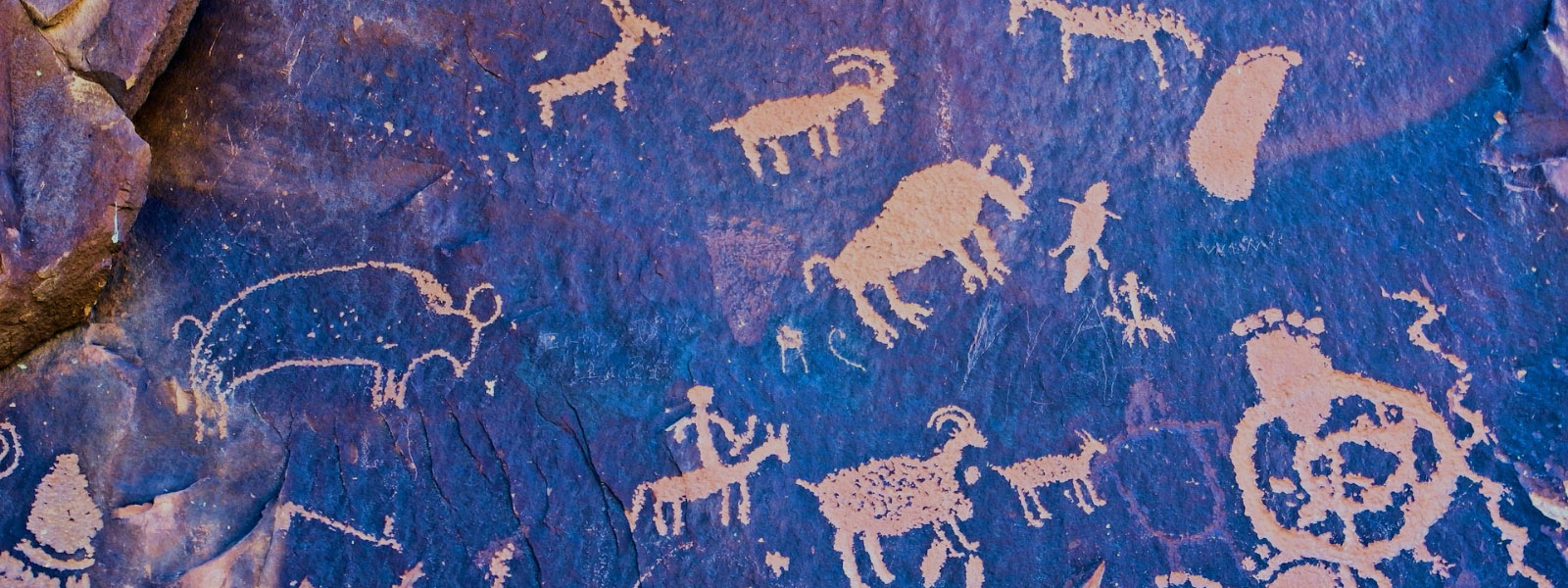
Ekphrasis as Translation
Translating from Art into Poetry
This project explores the meaning of translation as it moves across text type. Ekphrasis, meaning description in Greek, has a long history of poets responding to artwork. What does it mean to think about ekphrasis as translation? Thousand Languages special project intern, Cecilia Savala, explores this question by engaging with Maria Nancy Thomas's artwork published in Hayden's Ferry Review Issue 63.
Artwork by Maria Nancy Thomas | Poems by Cecilia Savala
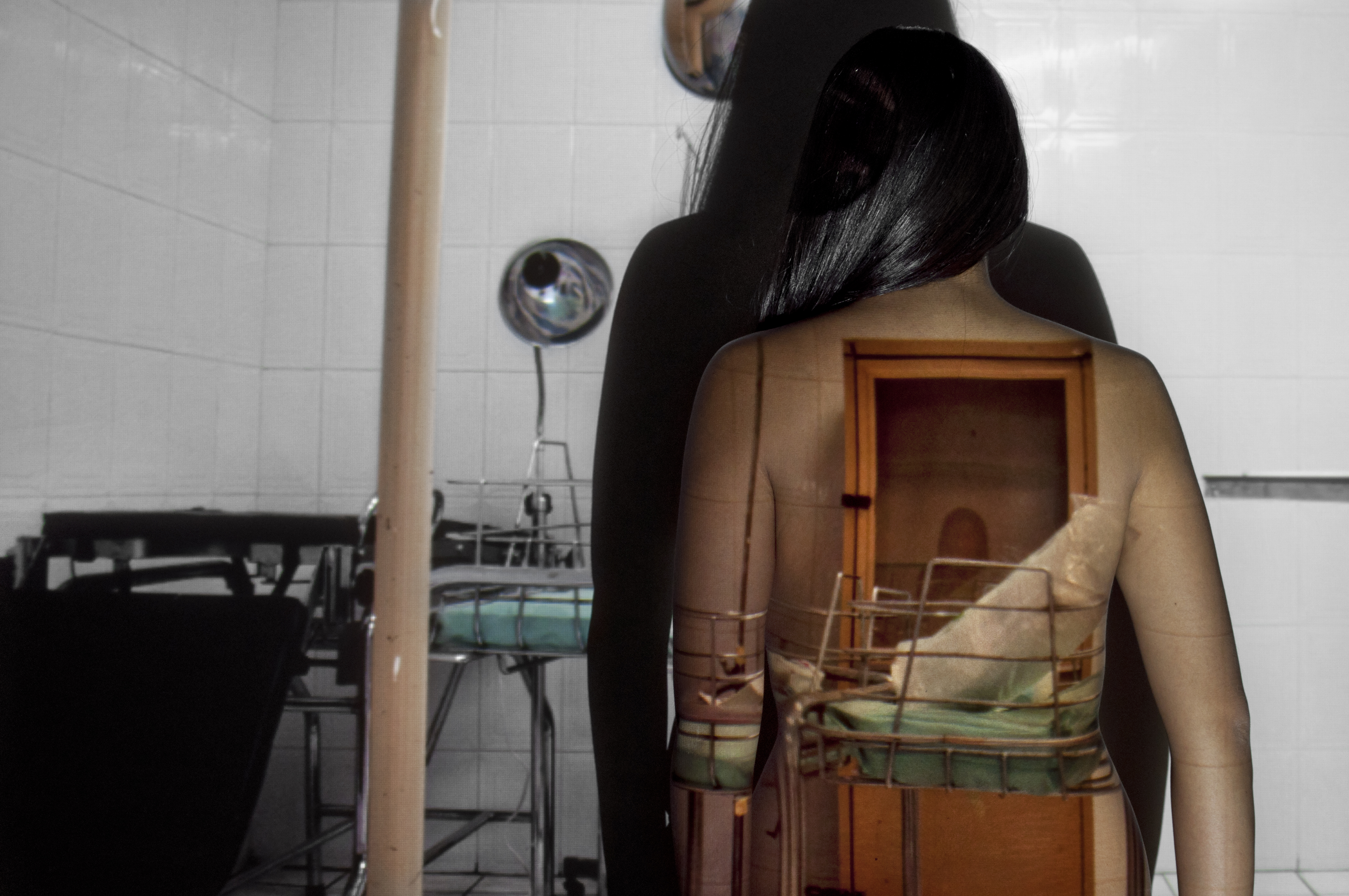
El Cuarto Donde Nací
I was delivered into a portrait with too many exits.
My names are shadow, sepia, nascent. Sterile instruments
replace any semblance of warmth: metal cradles me.
I am heavy plastic trays, window panes, not quite white walls.
Just born, I am older than I should be,
a child of the things of this room.
My mother, nowhere to be found.
She couldn’t stay. She couldn’t bear to look.
It’s better for us both, her running.
My own birthplace, the crying and the bleeding:
she wasn’t the one to get me this far.
Bleeding and bargaining: I’m here for good.
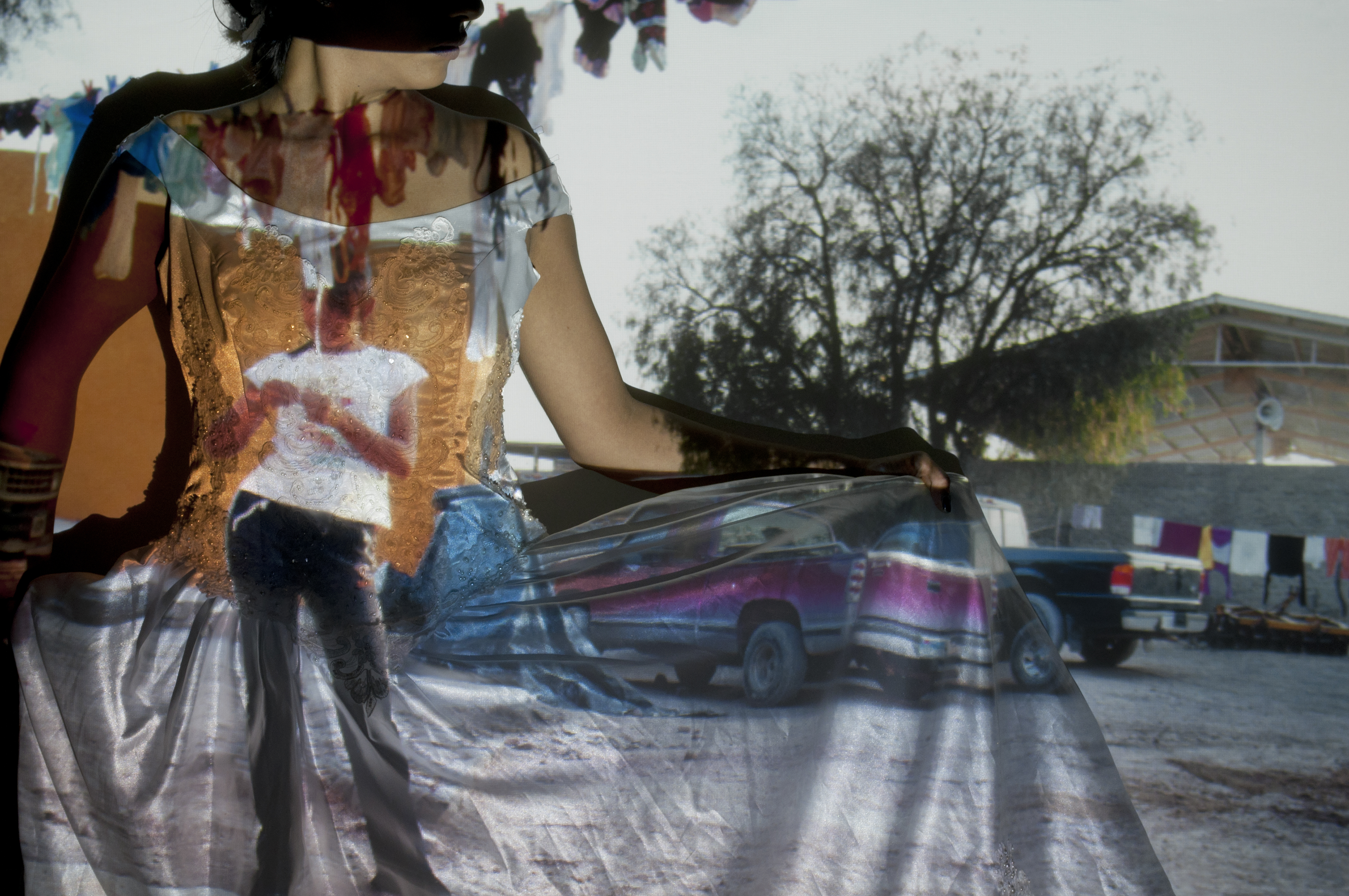
Quinceañera
Little girl,
whose car will you get into?
How high are your heels?
You’ve grown too big
to straddle the sycamore tree
with the neighborhood boys.
Clotheslines separate women from girls—
you’re all grown up, whipping sheets from the wash.
Keep your curls at a distance,
your lace protected—
older brothers and gravel dust, a threat above a whisper.
Paper doll, too old to wear bangs as a buffer.
Heavy hoop earrings advertise
to men who chew gum,
men without mothers.
What will you do—
your looks your looks your looks
rouge with skinned knees.
Note on Ekphrasis by Cecilia Savala
I see the defense of ekphrasis as translation as portraying different states of matter. If the original artwork is the solid state, heat that up, and the poetry that emerges is the liquid form of the original art. By reading the ekphrastic poetry aloud, we’ve transformed it into a gas, a piece of art that takes the shape of the container and is harder to possess. Throughout this process, I’ve taken existing art and shaken it up; I’ve created artistic interpretations of art that already exists. The original artwork stands on its own, but through ekphrasis, I’ve translated the images, shapes, and tones into words, stanzas, and spaces.
I’ve approached my work in ekphrasis as intermedial translation. Semiotics, the study of signs, says that from signified to sign to signifier, there lies necessary translation. Ekphrasis is defined as the interpretation of a visual representation as a verbal representation. Ekphrasis, instead of being a sign, takes the sign (art) and translates it into the thing. Using semiotics and compositional analysis, I’ve translated three art works, originally appearing in Hayden’s Ferry Review, into individual ekphrastic poems.
These poems take shape in reflective forms of the artwork and describe what’s happening in shapes and colors to literally translate each piece of art (sign) into poems (signifier). I approached each piece of art as it’s own entity but as simultaneously connected to the other pieces. Since all three were contributed by the same artist, Maria Nancy Thomas, there were certain elements that threaded the three together.
For example, each photo included an image of the artist herself transposed over the scene. This artifact indicated to me that the poems should all be written from the first person perspective; I used I and we throughout all three poems. Because of the facelessness and/or disconnected look on the face of the artist in the images, the tones of the poems became haunted or discontent. I also included details from the art in each poem, such as the metal instruments in “El Cuarto Donde Nací,” and the clothesline in “Quinceañera,” which can be seen as direct translation, in contrast to the fictionalized details added.
The masculine silhouettes in the background of “Billar” became “handsy old men” and “our ex-husbands.” In “El Cuarto Donde Nací,” I took the artistic liberty of assigning identity to the second woman’s head, framed in multiple doorways. She became the speaker’s mother who had made the difficult decision to leave her newborn child behind. These choices within the act of translation can be seen as comparable to the translator who has to choose between two meanings of a word or who has to create an equivalent metaphor for an idiom that doesn’t exist in one language.
The process of translating art into poetry was one that I approached with much care. The act of reconfiguring and restating another artist’s work was at times daunting, and throughout the whole process, I was concerned with what the original artist would think of what I’d done to her art. I hope I did these pieces justice and look forward to doing more ekphrasis in the future.
About the Art
Artist Bio
Maria Nancy Thomas is a photographer born in Zacatecas, Mexico, in South Phoenix, Arizona. Maria holds a Bachelor of Fine Arts in Photography from Arizona State University’s Herberger Institute of Design and the Arts. Her photographs showcase the acculturation between her Mexican and American experiences. Her artwork explores gender roles, stereotypes, cultural parallels and social issues. Maria has exhibited at Arizona State University’s Gallery 100, The New School for the Arts and Academics, Yuma Art Center, Phoenix Center for the Arts, Arizona Latino Arts and Cultural Center, The Alice Gallery in Washington and others.
You can see images from her most recent project, “I am South Phoenix,” in this publication.
Artist Statement
“Nepantla is the Nahuatl word for an in-between state, that uncertain terrain one crosses when moving from one place to another, when changing from one class, race, or sexual position to another, when traveling from the present identity to a new identity.” —Gloria Anzaldúa
I spent the first twenty-one months of my life in Zacatecas, México. My family was relocated to Phoenix, Arizona by the company my father worked for at the time. I struggled to adapt to a new culture and language and learned to speak English watching television and going to school. The transition from my Mexican norms to American norms was difficult. Over time I began to notice my Mexican traditions fade away. Now I realize it created the innate nature of my artistic sensibilities. My photographs showcase the acculturation between my Mexican and American experiences. They explore gender roles, stereotypes, cultural parallels, and social issues involving Mexican-American women.
I traveled to Mexico to reexamine my cultural understandings as an adult. By projecting the images of Mexico onto myself I am attempting to transpose an identity I no longer possess. These images celebrate a “new identity” that exists in liminal space. (source: HFR 63)
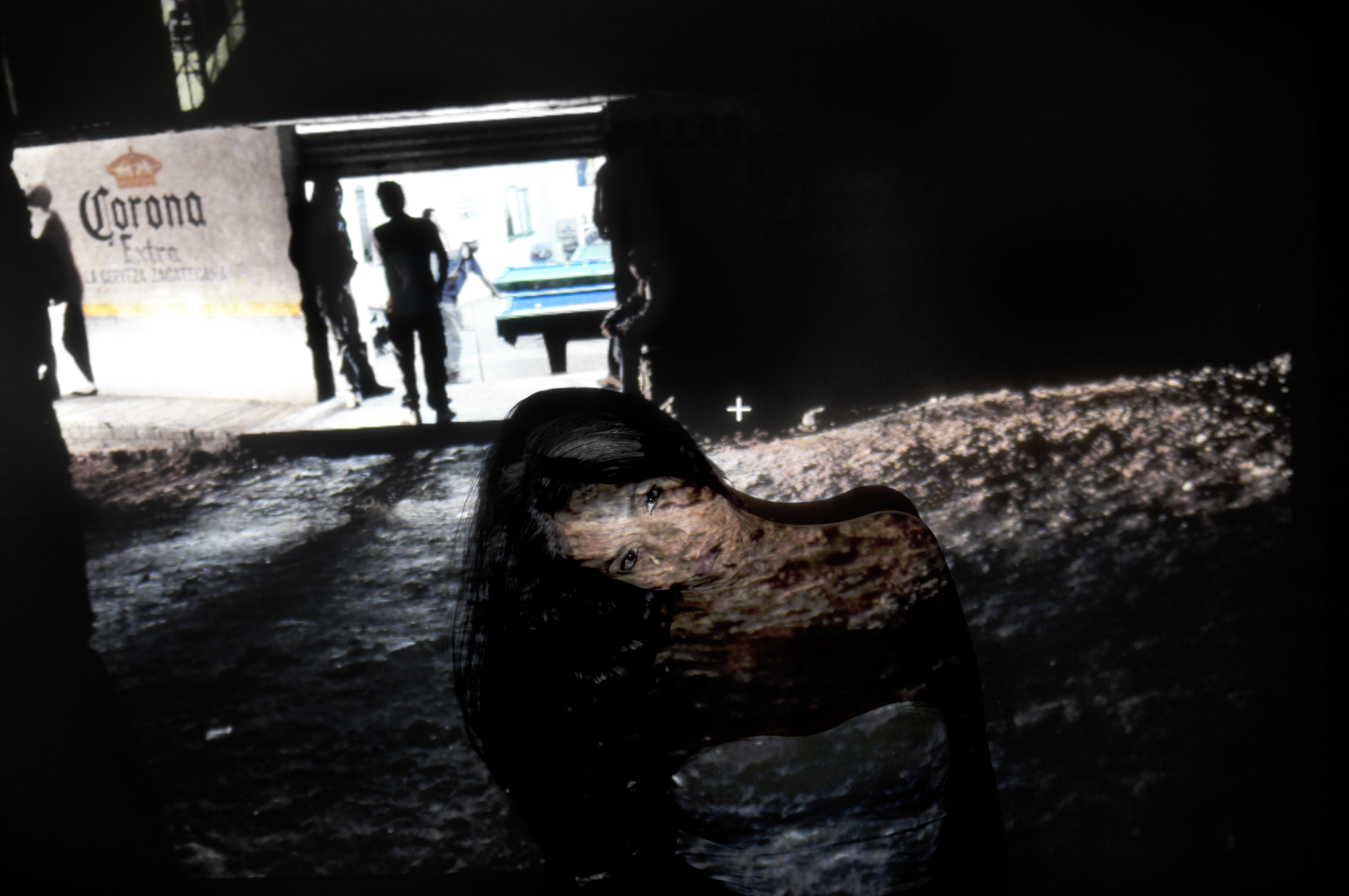
This project is run by TLP Intern Cecilia Savala
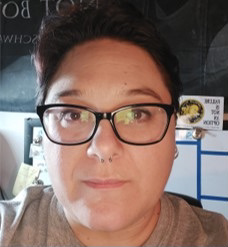
About Cecilia
Cecilia Savala is originally from the Midwest but is currently writing from the desert of Tempe, AZ where she is a Graduate Teaching Associate, an Assistant Director of Writing Programs, and the Poetry Editor for Hayden’s Ferry Review. Her work can be found or is forthcoming in Mochila Review, Boiler Journal, and Passengers Journal, among elsewhere. (updated 2023)
This project was completed in Fall 2022 and published Spring 2023.